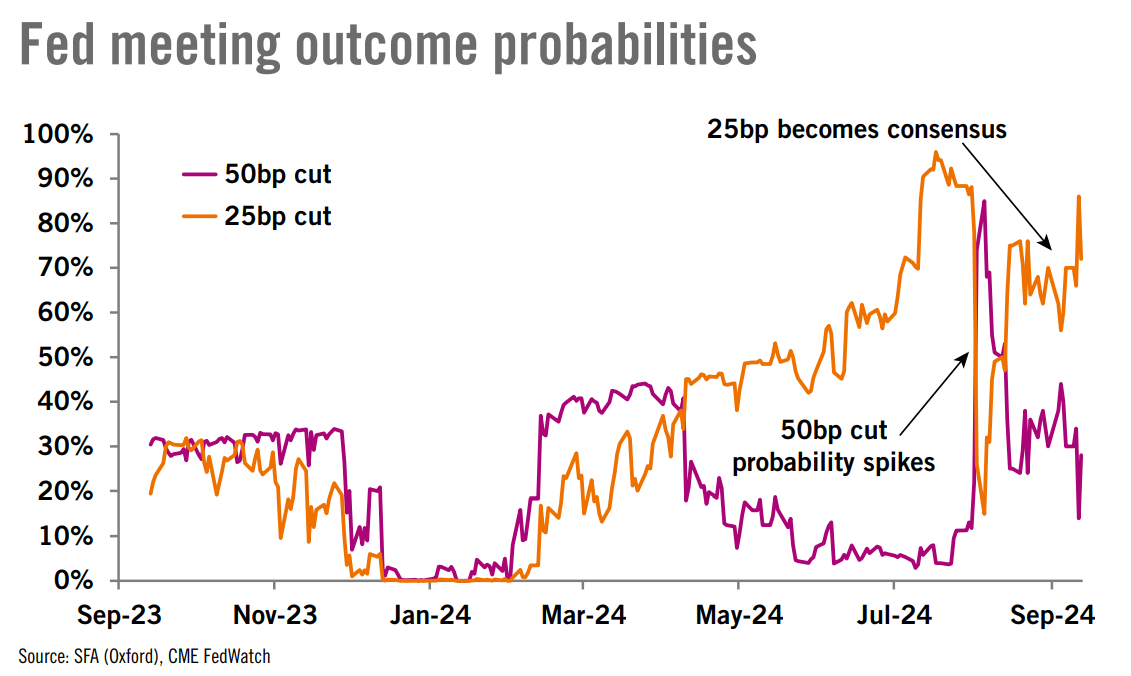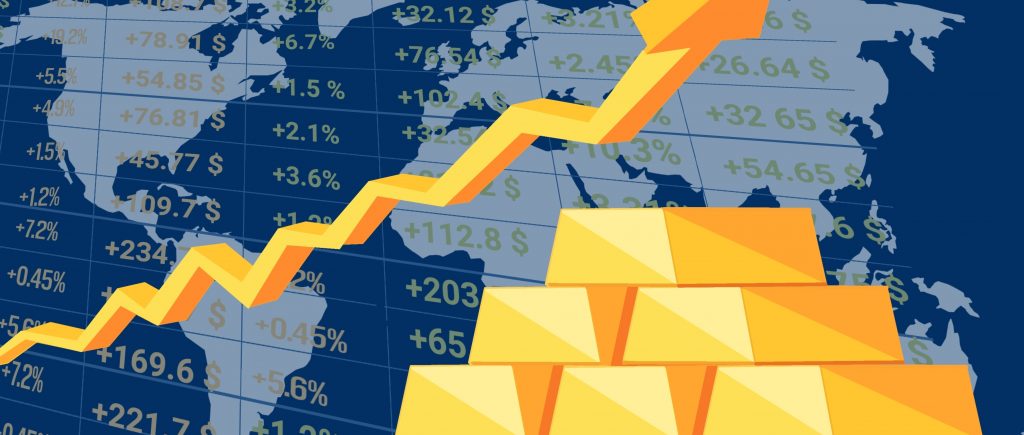Amid increasing speculations that the Fed would cut interest rates by a larger margin later this week, gold prices hit a record high in Asian trade, earlier on Monday. Though Trump seemed uninjured, reports of a second attempt on the Republican presidential nominee’s life reportedly increased demand for safe haven assets, and of course for gold as well. Asia’s trade volumes were somewhat constrained by South Korea, China, and Japan’s market vacations. While gold futures expiring in December advanced 0.1% to $2,613.70 an ounce, spot gold increased 0.4% to a record high of $2,589.02 an ounce.
The momentous gold price rally was made possible by a softer US dollar while markets await Fed’s policy meeting. Markets are divided about whether the central bank will lower interest rates by 25 or 50 basis points on Wednesday, despite the fact that a cut is generally anticipated. By year’s end, analysts anticipate rate cuts of at least 100 basis points. Because they lower the opportunity cost of investing in non-yielding assets, lower rates are good news for precious metals.
Chinese Demand, Q4 Expectations
Silver prices will rise on exceptional Indian demand and a weaker USD, while gold is projected to benefit from a number of tailwinds in Q4, including this week’s anticipated Fed rate cut, ongoing central bank purchases, and a comeback in Chinese demand. Recent precious metals research indicates that gold should benefit from the Fed’s rate-cutting cycle beginning on Wednesday, even if it is only a 25 basis point cut.

Shanghai Gold Exchange Withdrawals
In addition, sovereign demand appears to be sustained despite record-high prices. According to the World Gold Council, net additions to reserves by central banks increased to 37 tons globally in June, demonstrating their continued commitment to buying gold. Jewelers tend to stock up in September and October in anticipation of the national holiday in October, which suggests robust wholesale demand as indicated by Shanghai Gold Exchange withdrawals. Although there is always high demand for gold at this auspicious time, there is undoubtedly a risk to the downside this year due to the low consumer attitude.
Despite a wild swing in early trade on Monday, spot gold is still trading above $2,575 per ounce; namely XAU/USD is trading at USD 2,582.52 per ounce, +0.15% up at the the time of writing, following a big increase last week. Indian demand is expected to drive up silver prices significantly in 2024. According to preliminary import figures for July, India’s imports of silver have increased by 715% year-to-date compared to 2023 to 4,554 tons, or 17% of the world’s anticipated primary supply for this year.

A record high of $2,554.78 per ounce of gold has been attained due to a number of factors, including monetary policy, inflation, and economic instability. According to experts, central banks’ purchases of gold, geopolitical unrest, and a move away from conventional asset classes will all contribute to the metal’s long-term bull run.
Inflation, Recession-linked concerns
The fact that most investment portfolios have less than 1% dedicated to gold suggests that the metal is misunderstood. Even a mere reallocation of 2-3% to gold may result in a $1,000 increase in price per ounce. Fiscal stimulus programs, like those implemented in the US, are important in driving inflation. Nonetheless, US inflation dropped to 2.5% in August, and this month’s interest rate cut by the Fed is anticipated.
A recession will simply make the US’s spiraling debt and deficits worse, with the deficit possibly reaching $4 trillion. When devaluation is the only way out of a fiscal crisis, gold becomes the ultimate hedge. Although the long-term picture for gold is still positive, and so, investors are advised caution in the near term, speculating that as the market absorbs recent gains, gold prices may drop by $200 per ounce in the upcoming months.
The price of gold has surged, but mining stocks have performed terribly. Ineffective capital allocation, inflationary pressures, and poorly timed mergers and acquisitions have caused the GDX, an index of gold mining firms, to decline by 40% over the previous ten years. Because energy prices have stabilized and input costs have decreased, which increases the profitability potential for gold miners, he thinks the industry’s equities are set for a rally.
Dollarization-linked concerns
Institutional investors are still holding out for a longer-lasting rally before reentering the market. When generalist investors return to the market, gold mining stocks may experience a notable increase in value.
Due to efforts of de-dollarization within the world economy, macro swings in the gold price action have shifted to the BRICS countries. Currently, 66% of the world’s demand for jewelry and 50% of the demand for real gold come from China, India, and other growing countries.
Slowly but surely, trade is shifting away from US dollar treasuries and toward local currencies backed by gold reserves. This shift is known as de-dollarization.
 Noor Trends News, Technical Analysis, Educational Tools and Recommendations
Noor Trends News, Technical Analysis, Educational Tools and Recommendations





